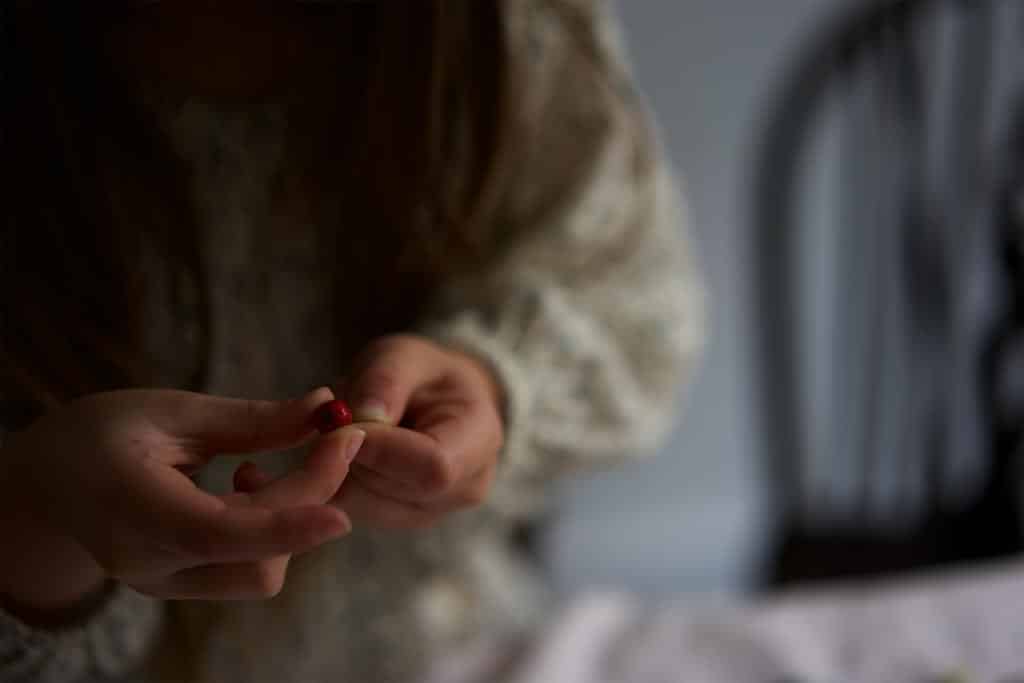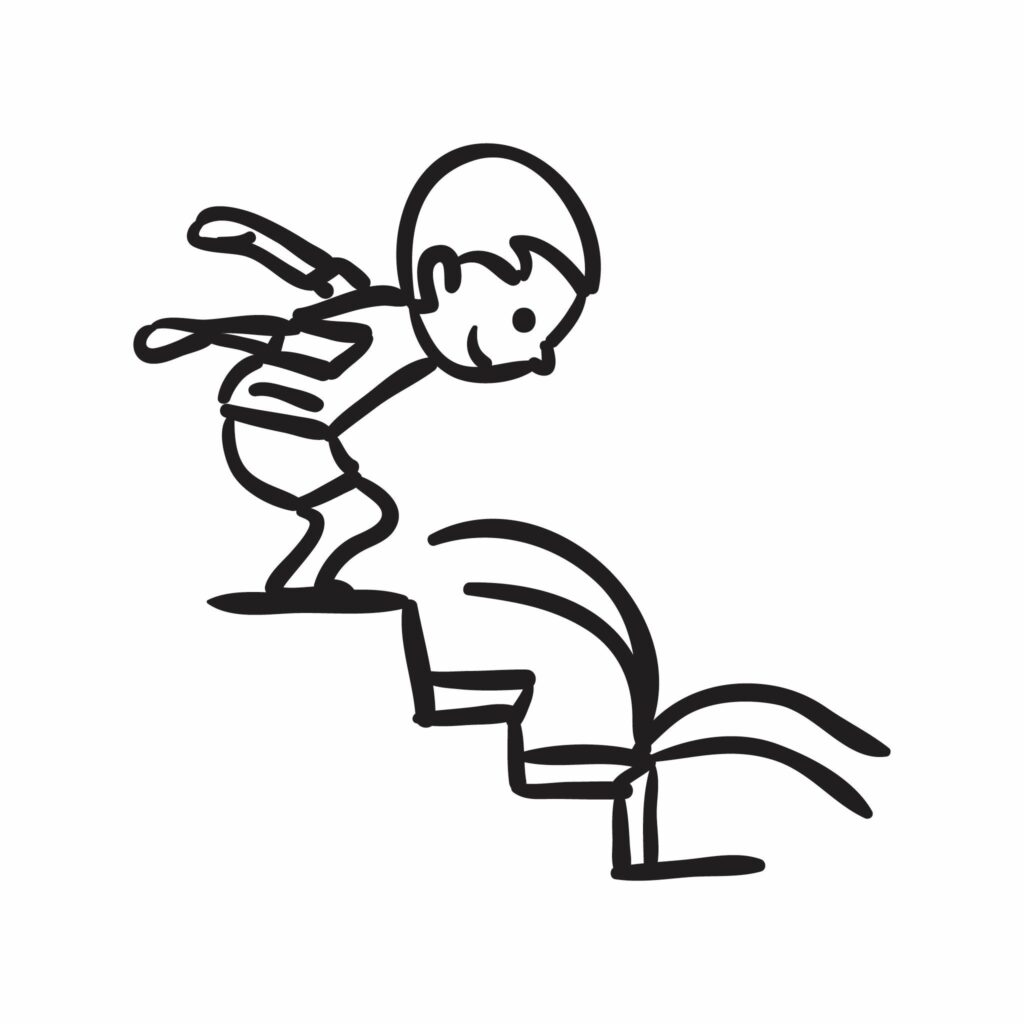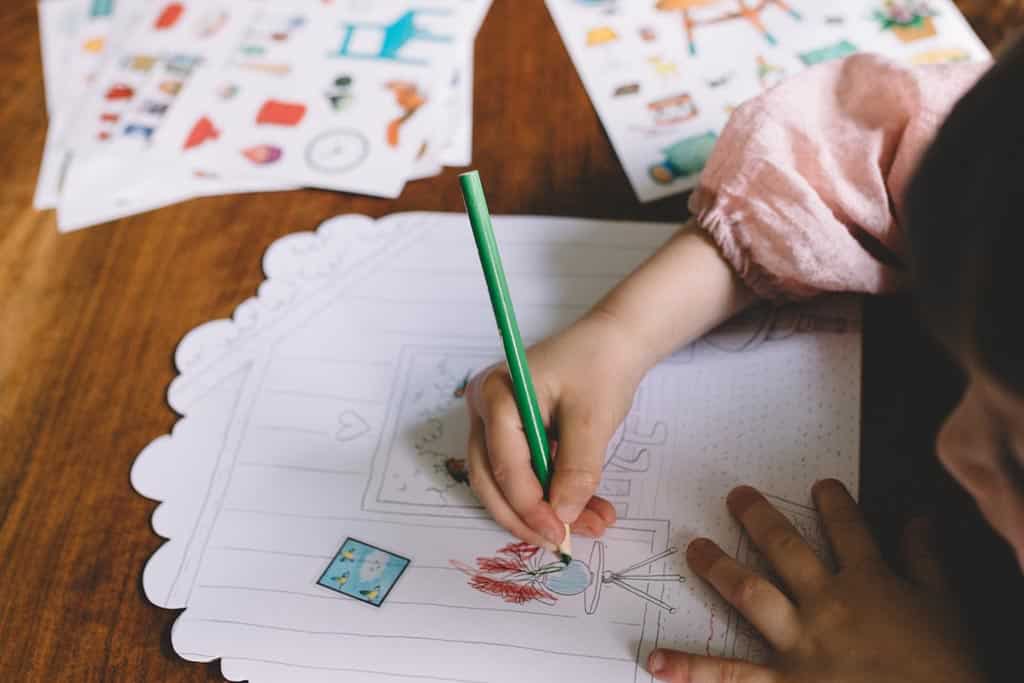When I started teaching, one of the first things I noticed was that preschoolers were slackers.
While the older children were busy in their classrooms, the youngest pupils – my pupils – were taking it easy, playing outside in the sand and mud.
That’ll never do, I thought. I’ll soon whip them into shape.
There were letters to learn and pencils to grip. Formal school was around the corner. In September they would be sitting at desks.
I was going to get results. The parents would thank me. The headteacher would be impressed.
I was 23.
I think you can guess how this story ends…
Getting ready for school
You can learn to hold a pencil by holding a pencil. You can learn to form letters by tracing line after line of them in handwriting books.
But you will be bored out of your mind – and you will probably kick your father in the shins.
Some of my pupils tried to kick me but I was more agile in those days and I was able to get out of the way.
Fortunately for me, and my reputation, one of the best preschools in the country was round the corner. They kindly let me visit and I learnt the error of my ways.
I saw how children can develop all the pencil grip they need by playing with sticks and stones, water and clay.
I saw other things, too, and we’ll come to them later in this series. But today I want to talk to you about fine motor skills.
Here’s a selection of activities you can offer your child to improve her fine motor control, with a special focus on bringing the first two fingers towards the thumb in what’s known as the tripod grip. It’s how you hold a pencil and it’s a key pre-writing skill.
Note: Click here to get a free module from Get Set Five where we look at how to draw and write simply by arranging sticks and other materials.
Water play
Playing with water is mesmerising. The cool feeling on your hands, the gentle sound of lapping and splashing, the rainbow arcing through a sprinkler’s mist.
This makes it the perfect fine motor activity because your child will never get bored. The sun is going down, supper is on the table but your child steadfastly refuses to come in.
Water sensory bins
I’m not a fan of sensory bins.
There’s nothing wrong with them. They fulfil a purpose. It’s that, to my mind, everything is a sensory bin.
Having said that, bins are great when you want the play to be contained, when you can’t handle too much clean-up.
Fill a bin or a large bowl with water and add objects that float or move. Can you catch them with just your fingertips? For added sensory fun, how about filling the bowl with boba pearls (the tapioca balls in boba tea)?
And when the play is over, offer a towel to dry everything off. If you’ve ever watched your child trying to dry her hands, you’ll know that squeezing fingers together to hold a cloth is a real challenge – and a great fine motor workout.
Read more about how to do sensory play the right way.
Water transfer activities
Is there a toddler or preschooler who doesn’t love this?
Pouring from one container to another – and back again.
You don’t need a water table. Sit in the bath and play with old shampoo bottles and lids. Vary the container size to increase the challenge. Now try pouring bubbles. The play – and discovery – happens naturally.
- Water plants with a watering can
- Fill everyone’s glass at the dinner table.
- Use syringes and pipettes to transfer with precision
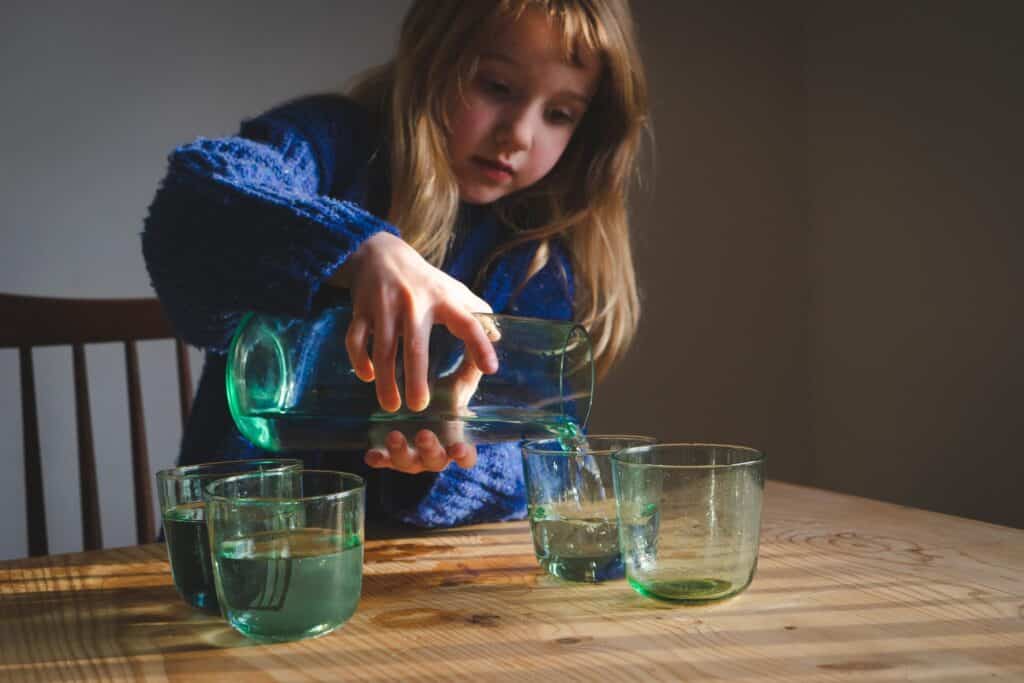
Spray bottle painting
We have a beautiful rose in our garden.
The aphids like it too.
But a dropful of washing-up liquid diluted in a spray bottle full of water is enough to see them off.
Best of all, pulling the trigger is the perfect preparatory exercise for pencil grip. The first two fingers are strengthened as they close, making for a more confident tripod grip.
You can also make beautiful spray pictures by adding a squirt of poster paint – just make sure you do this outside!
Exploring sand and soil
Have you ever tried to mould damp sand or earth? You can make quite intricate constructions if you get the consistency right. I remember watching with fascination as my son made a subterranean ‘marble run’ by digging a hole and then carefully shaping ramps that spiralled down into the ground.
If your child is younger, start with mud pies.
Digging and shovelling
Digging is a gross motor activity but holding the spade demands a firm grip. If you child is anything like mine, she can dig all day, making bedtime a breeze. Tired and happy gardeners go to sleep on time.
Planting seeds and gardening
How big is a pumpkin seed? Can you picture one?
Could you pick one up?
How about a carrot seed or a poppy? Not so easy!
Growing your own plants from seed is immensely satisfying. The 100 Toys children each have a seed tray and they take great pleasure in planting their seedlings each year.
Press a hole into the soil with the tip of a pencil and drop in a single seed. It’s a real fine motor challenge (that I often fail!).
And when harvest time comes round, you can enjoy picking the fruits of your labours. Pinch out flowers and cress; shell beans and peas.
To my mind, it’s the most rewarding thing you can do with your child.

Nature crafts and transient art
- Leaf rubbings. Traditional round crayons are tricky to hold when taking rubbings. If this is the case for your child, try rectangular blocks, like those from Stockmar. Either way, maintaining a firm grip is excellent practice for holding a pencil without the added pressure of having to produce something recognisable – Mother Nature has taken care of that for you.
- Sticks and stones. Like sandcastles washed away by the sea, you can create art with natural materials that isn’t meant to last . Arrange twigs and leaves, pebbles and seeds into beautiful patterns and pictures. Read more about transient art and the positioning schema.
- Nature collage. If you can’t bear to lose your beautiful nature art, stick the pieces down on paper or card. Applying glue is a real test of bilateral co-ordination. Can you stick things down without sticking them to your fingers as well? Read more about collage activities.
Stringing and threading
Hold the object still with one hand. Thread the needle through it with the other. It’s a hand-eye co-ordination masterclass.
Try the following:
- Flower threading. Older children can push blunt needles through flowers, leaves and dried orange slices.
- Nature bracelets. Take a strip of sticky tape with the sticky side facing outwards and wrap it around your child’s wrist. As she explores, she can stick small leaves, flowers and other interesting objects onto it.
- Daisy chains. Too tricky for most under 5s but something to enjoy together – and to aspire to. The fine motor benefits come regardless of whether you are successful or not.
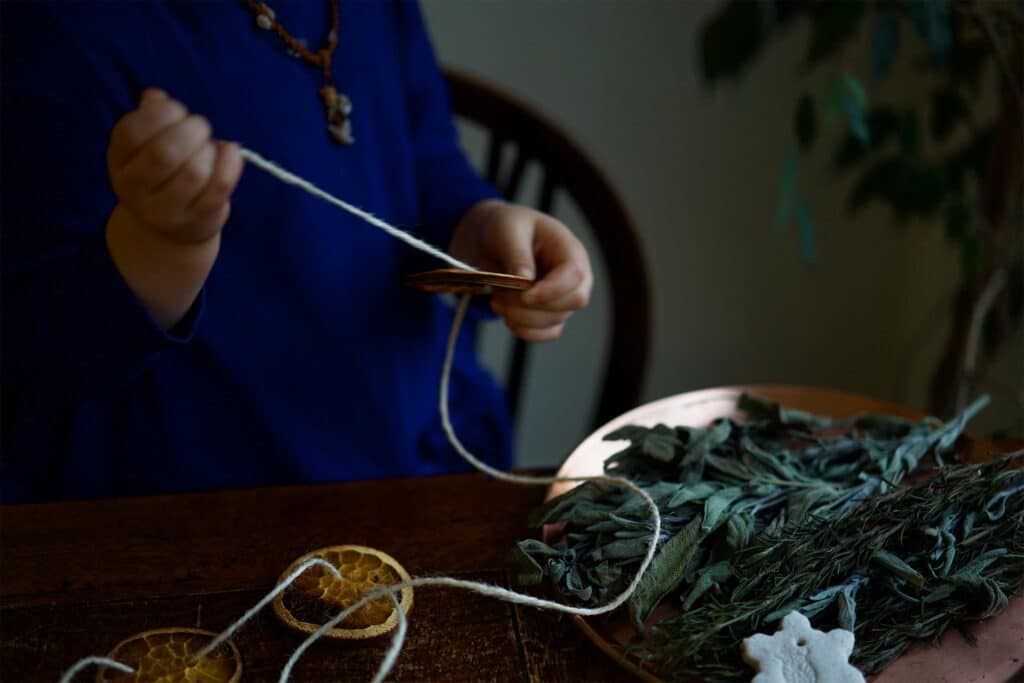
Final Word
Learning to write is about so much more than forming letters. Grip strength, dexterity and spatial awareness are all vital precursor skills. But acquiring them needn’t be dull. You can get all the fine motor workouts you need by opening the back door and stepping outside.
Look out of the window now.
What can you see that might set your child on the road to writing?
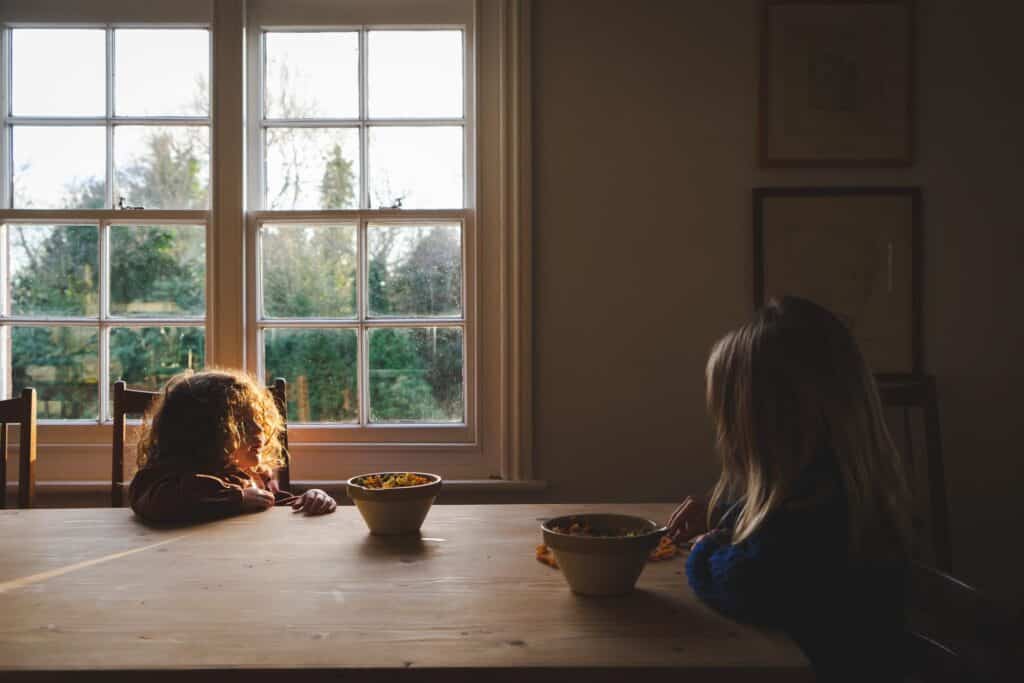
Have you run out of ideas?
What if you didn’t have to trawl the internet for play inspiration? What if your child’s freely-chosen activities were simple to set up, educational and deeply engaging?
How would that change things?
Our courses, A Year With My Child, Get Set Five and 5 Plus are designed for parents of toddlers, preschoolers and the over 5s and they’re packed full of fun and sensible advice.
Enter your email and we’ll send you free modules from each course. And then sit back and relax as your child learns to make her own fun.


